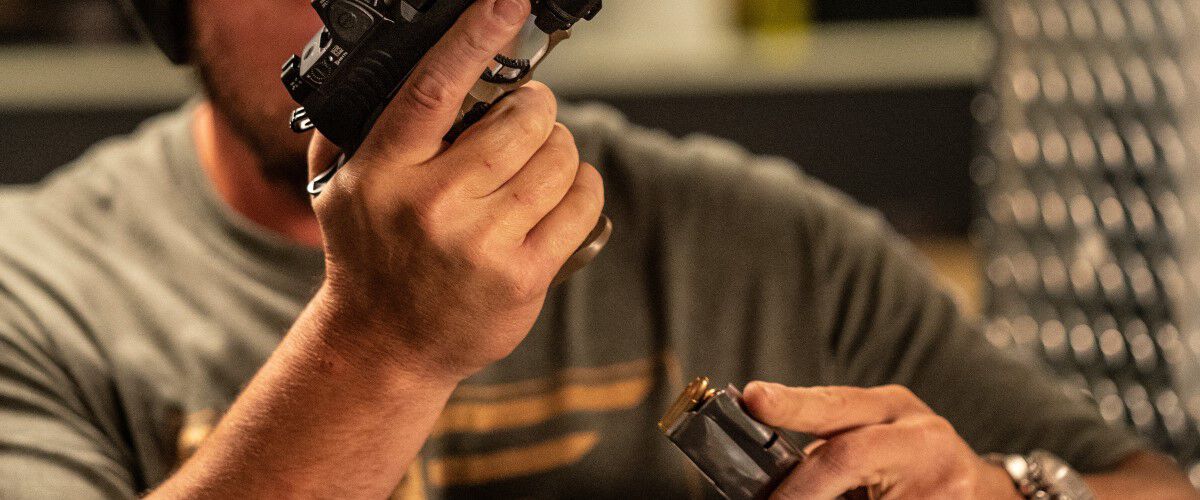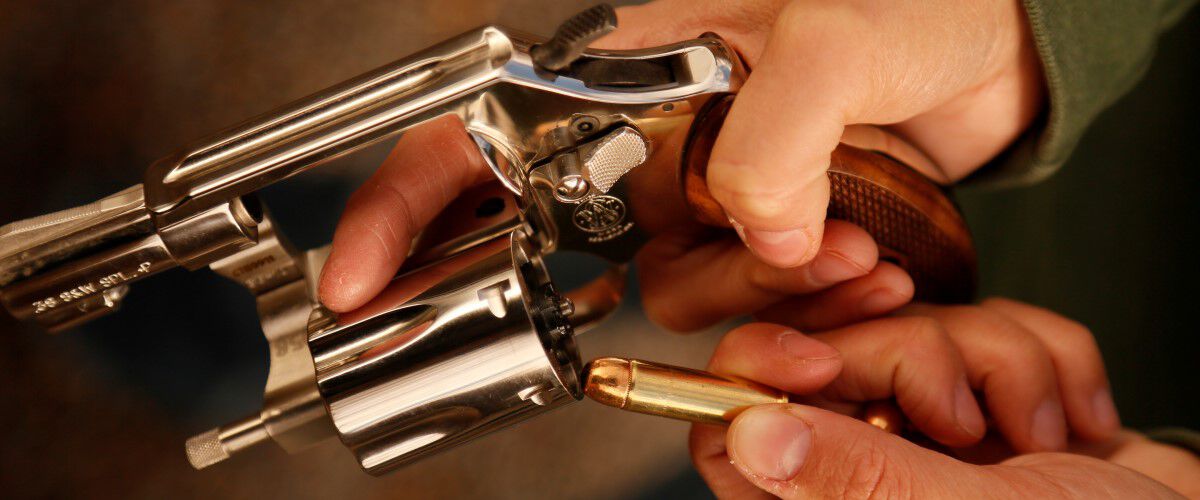Fast Recovery

You’ve done your due diligence. You’ve mastered your grip, draw and press-out. Your trigger control is solid, and you can put multiple shots on target quickly. But what happens if, in the fight of your life, your handgun clicks when you pull the trigger? Whether it’s because you’ve ran out of ammo or had a malfunction, the question remains the same: Now what? Prevent panic and stay in the fight by mastering the art of the rapid reload.
Revolvers
Many tote a wheelgun. They are simple to operate and bombproof. However, they are a tad more difficult to reload quickly than a magazine-fed pistol. This is where a speed loader comes in handy. The device fills all of the revolver’s chambers at once. This eliminates having to fumble with single rounds, trying to place those rounds in a small hole.
When you need to reload your wheelgun, try what’s called the support hand reload. The gun stays in the shooting hand, eliminating transfer time. This process takes practice to master and will likely feel odd at the start. Stay with it.

Open the cylinder with your thumb or a finger on your shooting hand and rotate it open with your support hand. Your trigger finger should now be off the trigger and in a position to hold the cylinder open. Grab the speed loader with your support hand and grip the body of the loader with all five fingers. This will help with control. Let your fingertips move beyond the bottom edge of the speed loader to act as a guide and better align the rounds with the chambers.
Drill this technique often. You can practice every aspect of it at home except for the actual loading of new ammunition into the chamber. The full process should be performed on the range.
Semi-Automatics
These days, most prefer semi-automatic pistols when it comes to self-defense. With few exceptions, they hold more ammo than a wheelgun, and mag changes are less complicated than using a speed loader. Still, the process isn’t as simple as Hollywood makes it look. If a mag change is needed, it must be smooth and quick, and you’ll need to be able to chamber a new round without causing a jam.
Depending on how and where you carry your extra magazines, you’ll need to devote practice time to getting to those magazines quickly. Practice this process much like you would your draw and press-out. The quicker and cleaner you can get to your extra mags, the better.
First, you’ll need to dump the spent magazine by depressing the magazine release button. Accomplish this by a simple shift of the fingers on the firearm’s grip. The fingers should come off the grip’s side plate and move to the front of the grip, letting the back of the grip fall into the palm swell area. As the fingers shift, the thumb comes up and punches the magazine release button.
Once you drop a magazine and are ready to insert a new one, you’ll need to guide the magazine into the pistol’s magazine well. Do this with your support hand, and be sure your forefinger is pointed straight down the front end of the magazine body, pointing up toward the top of the magazine. This finger acts as a guide and allows you to quickly push out a round that could prevent insertion or cause a firearm malfunction.
Looking into the magazine well, be sure the back of the magazine is seated against the back of the well, and then press the magazine firmly into place. Don’t be shy about this. An aggressive press is better than a light one. If the magazine doesn’t fully seat, shooting issues will arise.
The speed load can be practiced anywhere with an empty handgun and an empty magazine. When you get to the range, load each magazine with a single round—fire and reload, fire and reload. After performing this drill a few times, load each magazine with three rounds. This time, fire all three rounds at multiple targets and then go through the reload process.